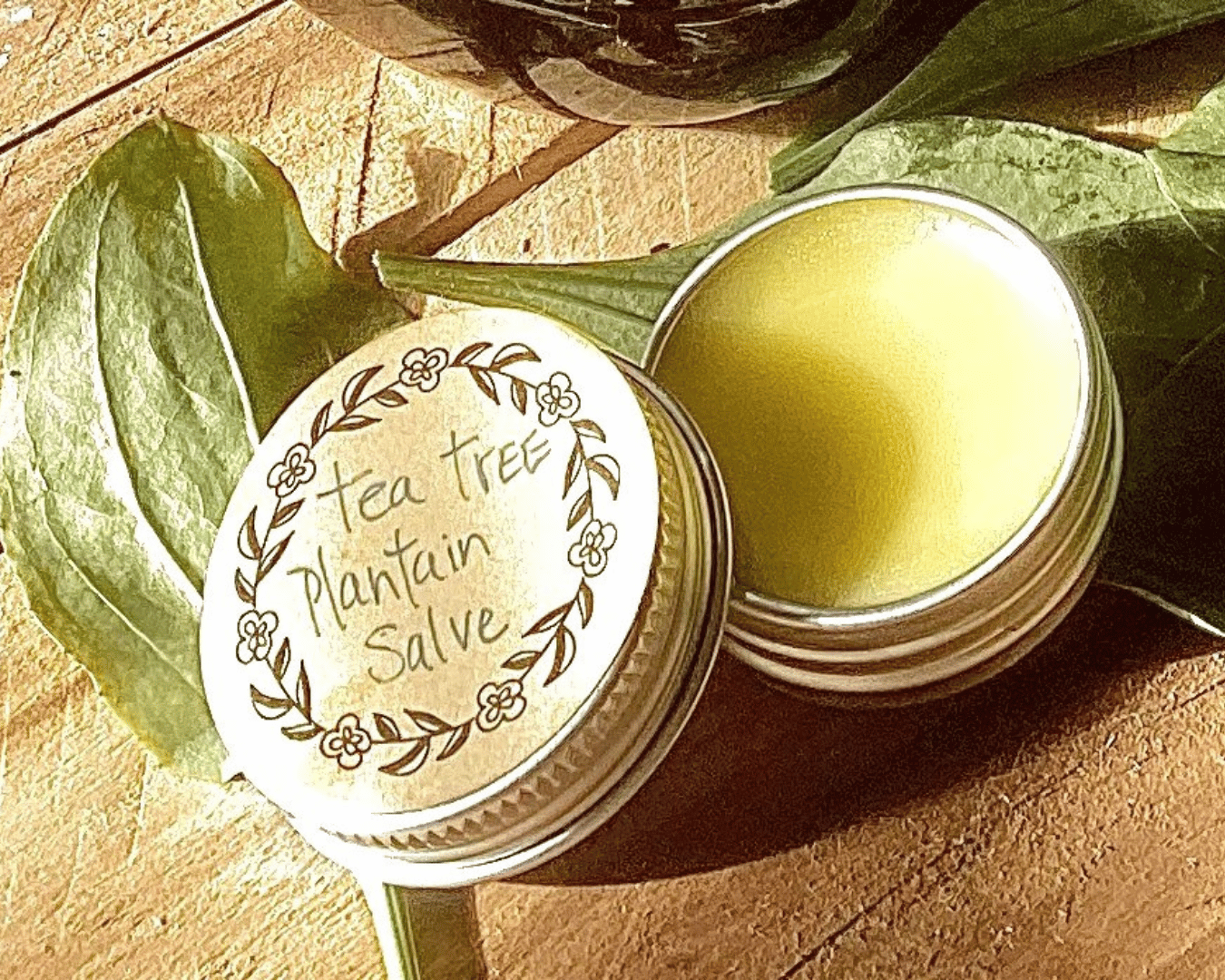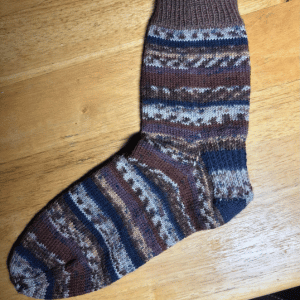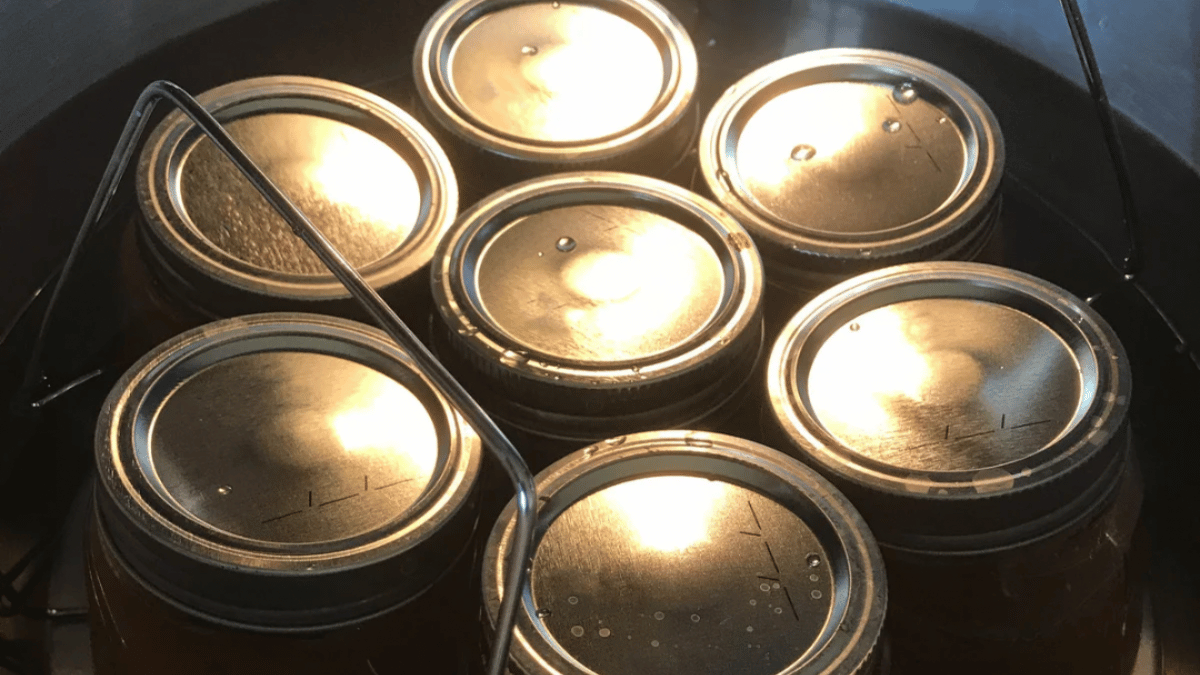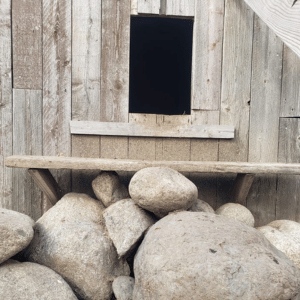Nature's Healing: Crafting Medicine from Plants
Healing Plants
Have you ever heard this:
“Superstitious! Unscientific! Think that plant is going to actually help you?”
My reply is simple. I smile in wide-eyed wonder, lean forward and ask:
“Have you ever heard of the National Institutes of Health (NIH)? The World Health Organization (WHO)? Let’s review some studies on their sites.”
While I don’t rely on the NIH or WHO to affirm my use of traditional medicine, I do explore those sites. During the season of the Virus That Shall Not Be Named, the WHO site included strategies that were very different than the US public health policy. It was a powerful reminder that there is more than one approach to medicine and health.
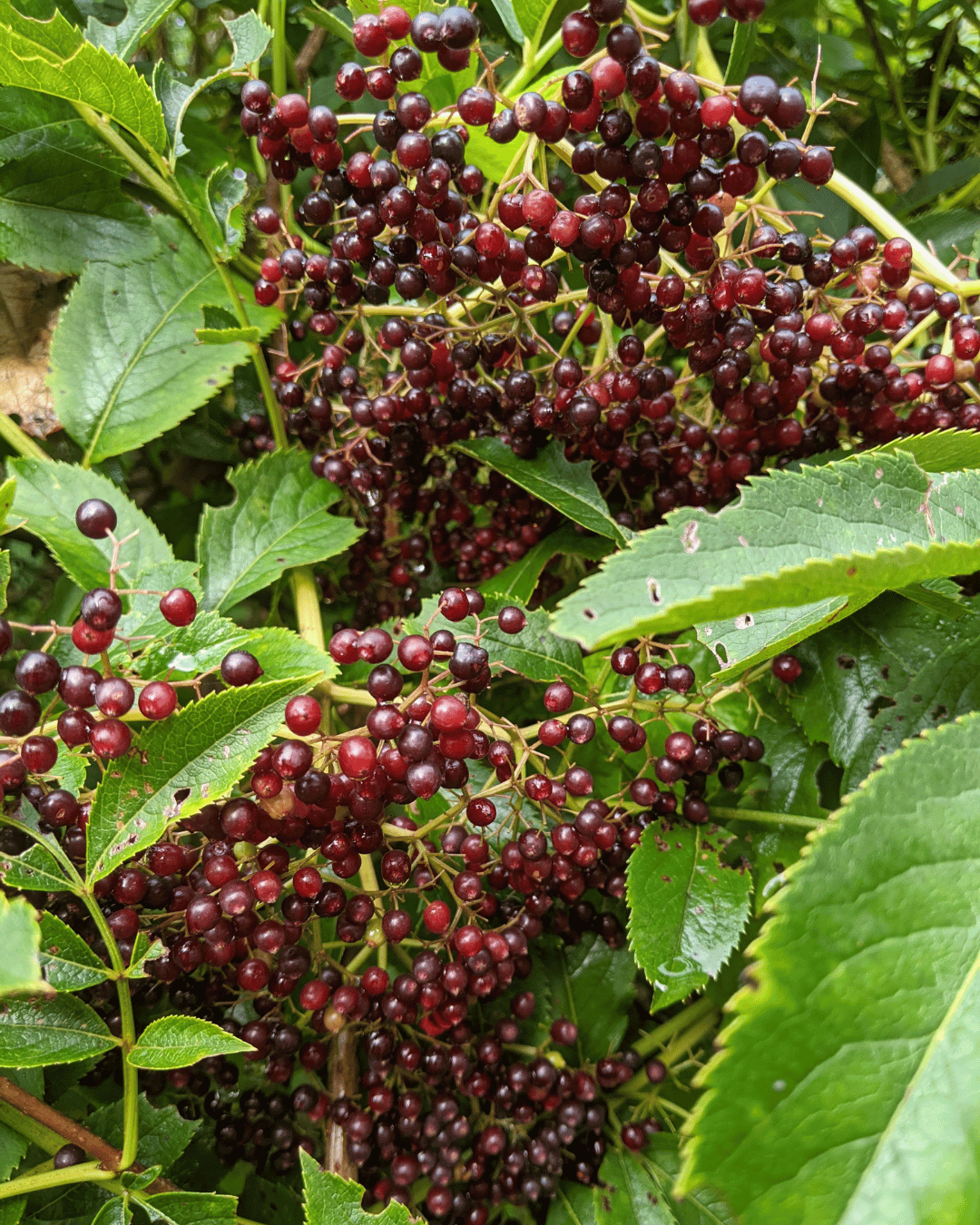
For example, many of us are familiar with elderberry.
Elderberries have long been used for respiratory ailments; modern studies affirm their effectiveness.
Clinical trials are underway to determine elderberry’s helpfulness with inflammation, diabetes and mental cognition.
How do we learn more about these medicinal wonders?
You do need to do your homework: a popular post on social media is not necessarily a trusted source. I’ve seen toxic plants listed as safe and read about unsafe processing techniques. Yes, a plant can have toxic compounds and be safe to use. Elderberry is a great example of this. It can be helpful or harmful. Do your homework to use it safely!
Herbal and traditional medicine institutes, proven herbal companies, the internet, the library, and local herbalists contain a wealth of knowledge. I’ve included some useful links at the end of this article.
How do we transform flowers, leaves, roots and berries into something more palatable and portable?
The possibilities are endless! For now, let’s take a high-level look at teas and tisanes, tinctures, and salves.
Teas and Tisanes
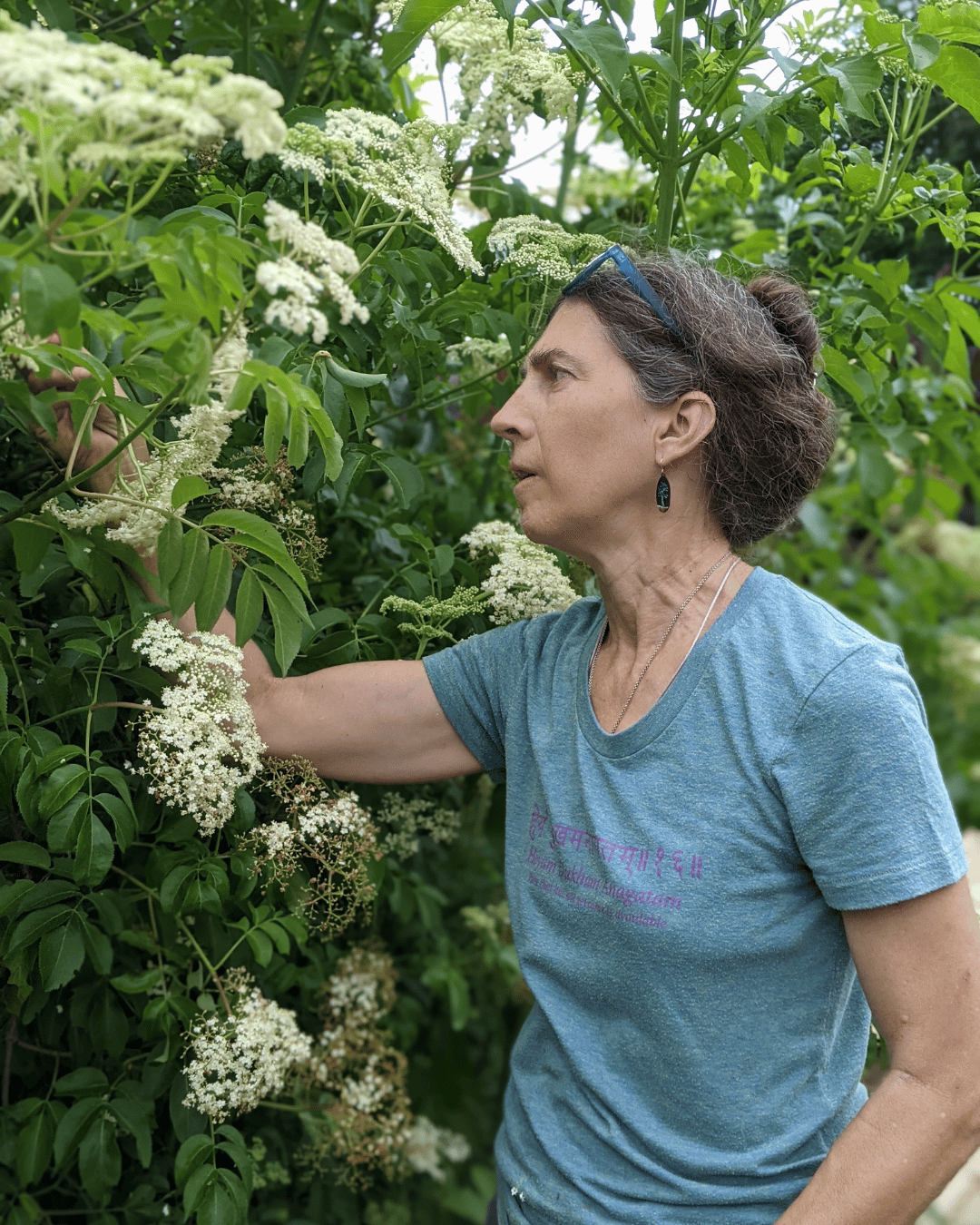
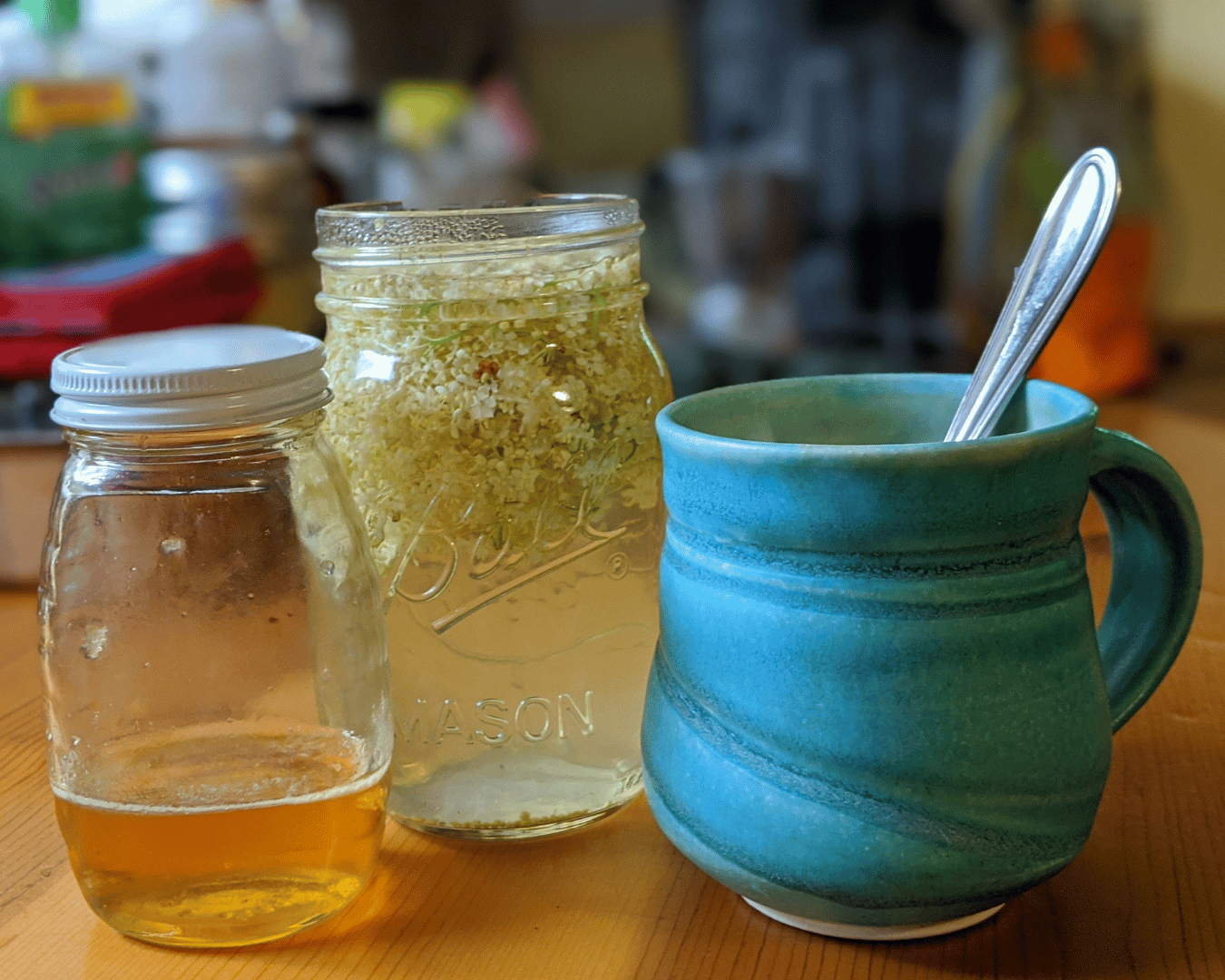
Technically, tea is a drink made from Camellia sinensis: the tea plant. Teas can be black, white, yellow, oolong, or green.
The drinks we often call herbal teas are actually tisanes: drinks made from infused herbs, spices, and/or plants that are not Camellia sinensis. For this article, we’ll use the words tea and tisane interchangeably.
Amy (pictured above) is a homesteader and experienced herbalist. She’s shown here in the garden picking elderberry blossoms. The blossoms can be dried for future use or used fresh.
Fresh elderberry blossom tea:
- Pick a handful of blossoms that are open, but not browning.
- Lightly shake out any insects.
- Carefully remove the flowers from the stalks (stalks and leaves can cause stomach distress).
- Place the flowers in a vessel that can withstand hot water.
- Pour not-quite-boiling water over the blossoms.
- Steep.
- Add honey and enjoy.
Tinctures
Tinctures are concentrated herbal extracts. They are made by soaking fresh or dried plant materials in a solvent (also known as a menstruum). Alcohol is the most common solvent; glycerin, water, vinegar, oil, and honey can also be used. After a specified time, the plant materials are filtered out and the remaining infused liquid is a tincture.
There are pros and cons to each solvent (alcohol, glycerin, water, vinegar, oil, and honey). They do not work equally well to extract the medicinal benefits of each plant, nor do they have the same shelf life. Wilderland Botanicals has a useful summary of the different menstruums; see their link at the end.
A tincture is more powerful than a tea or tisane. For example, elderberry blossom tea is made simply and quickly from flowers, hot water, and a splash of honey. Elderberry tincture is made from whole berries soaked in high-proof alcohol for six weeks or longer.
Basic elderberry tincture:
- Fill clean, dry jar halfway with fresh berries.*
Note: berries need to be fully ripe (no green or red berries) with all stems and leaves removed. - Pour high proof alcohol (like Everclear) over the berries.
- Shake gently and stir to make sure all berries are covered. Add more alcohol if needed.
- Cover with a lid, label with ingredients, and date.
- Place in covered cabinet away from heat and light.
- After six+ weeks, strain out the berries. Pour the infused liquid into glass jars.
- Use the tincture as is or use as base for elderberry syrup.
- The tincture can be diluted into another beverage (for immediate consumption) or sweetened with honey.
*Fill jar ¼ full if using dried berries. Use 80 proof alcohol as solvent.
Salves
Salves are a simple way to transform plant materials into a portable, useful product. A tube of lip balm or a tin of anti-itch salve can go wherever you go.
Basic salve recipe:
Ingredients:
- 1 ounce beeswax or beeswax pastilles
- 4 ounces herb- infused oils
- Optional: 10 – 20 drops essential oil
To Make the Salve:
- Break beeswax into small pieces. You can also use beeswax pastilles for this.
- Place beeswax in a double-boiler (low heat) and slowly melt.
Note: I use a small, dedicated crockpot for salve-making. - Add herb-infused oils; mix well.
- Remove from heat.
- Optional: Add essential oils.
- Quickly pour mix into tins, lip balm tubes, or small glass jars.
- Cool completely.
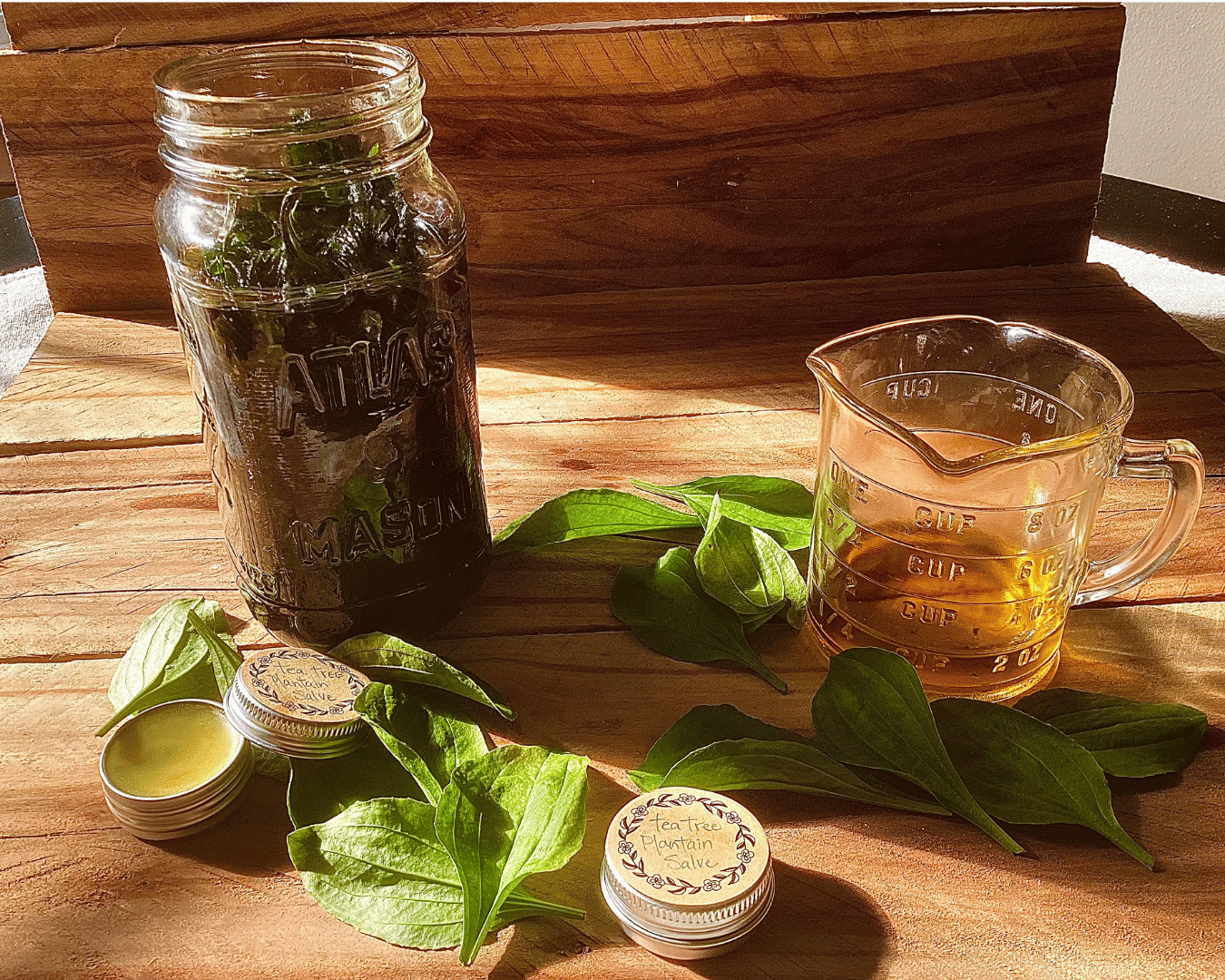
Let’s take a closer look at step #3: Add herb-infused oils; mix well.
This is where the medicinal magic occurs! You can infuse oils with a wide range of plant materials: mint, ginger, rosemary, calendula, pepper, dandelions … the list goes on. And you can use a variety of oils. Olive oil is often used: it is readily available, has skin- soothing properties, a mild fragrance, and a good shelf life. Other oils, such as almond, jojoba, coconut, and hemp seed, have different qualities. My friend Karen makes a super soothing salve with plantain and tea tree oil.
The simplest way to infuse your oils with herbs is to place your dry herbs (Most herbs need to be dry before adding oil.) in a clean, dry quart jar. (Most herbs need to be dry before adding oil.) Leave a few inches of head space. Fill the jar with oil to completely cover the herbs. Put a lid on the jar, shake well, label and date, and set aside.
Some people place their jars in a sunny window for a few weeks. I use a cabinet away from heat and light and extend my infusion time. Drain the oils (tip: use cheesecloth or muslin, knowing that the oil residue will linger in the material). Bottle and date.
Soothing Plantain Salve with Tea Tree Oil
Ingredients:
- 1 cup olive oil
- 1 cup dried plantain leaves
- 1 ounce beeswax or beeswax pastilles
- 10 – 15 drops tea tree essential oil
Three + weeks before you make your salve, make the infused oil:
- If your leaves are fresh, dry them for at least a few hours to remove excess water.
- Prepare a clean, dry jar.
- Tear / cut leaves and place in jar.
- Cover the leaves with at least an inch of oil, allowing expansion room.
- Cover. Label and date.
- Steep in sunny window for 2 to 3 weeks.
- Strain.
- Keep the strained oil in a cool, dark place for up to a year.
When ready to make your salve, follow the steps listed under To Make the Salve.
This salve truly is a balm for bug bites, rashes, itches, and allergic reactions. Enjoy!
Useful links:
Tinctures overview:
https://www.wilderlandbotanicals.com/blogs/knowledge-centre/ultimate-guide-herbal-tincture
Simple, researched recipes for salves, tinctures, and more:
https://thenerdyfarmwife.com/
https://mountainroseherbs.com/
Herbal Resources and Overview
https://chestnutherbs.com/about/links/
https://www.nccih.nih.gov/health/herbsataglance
